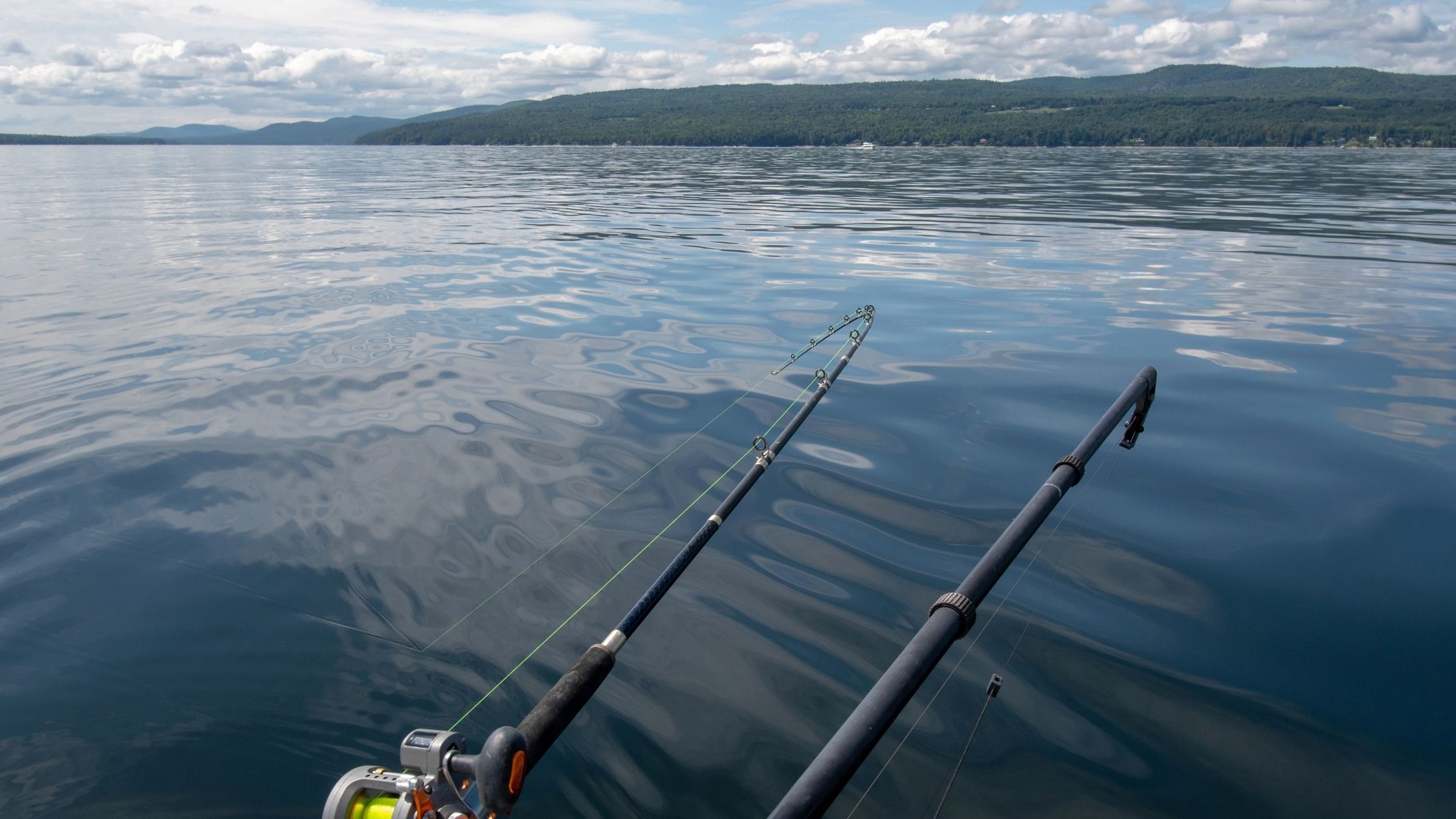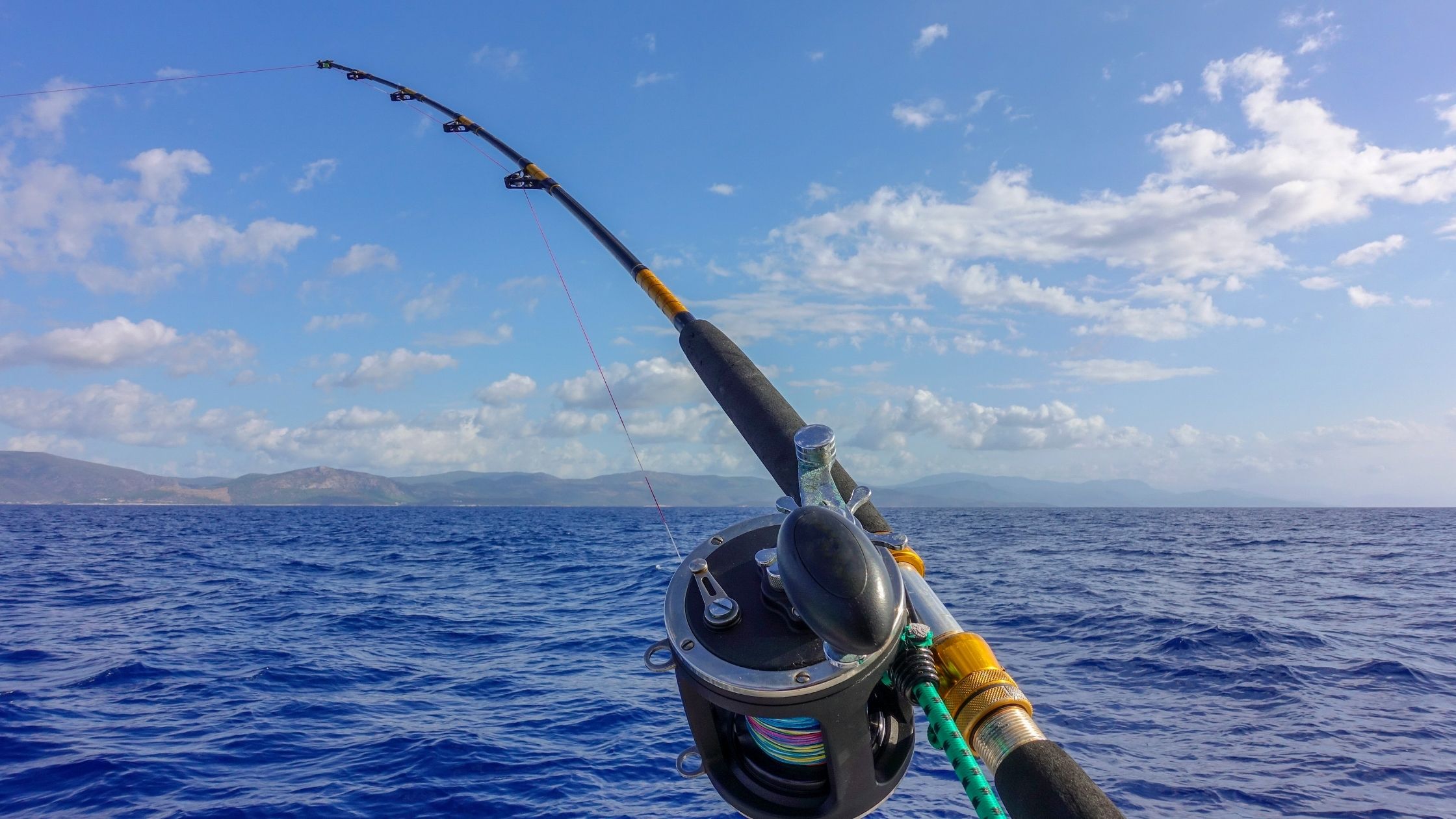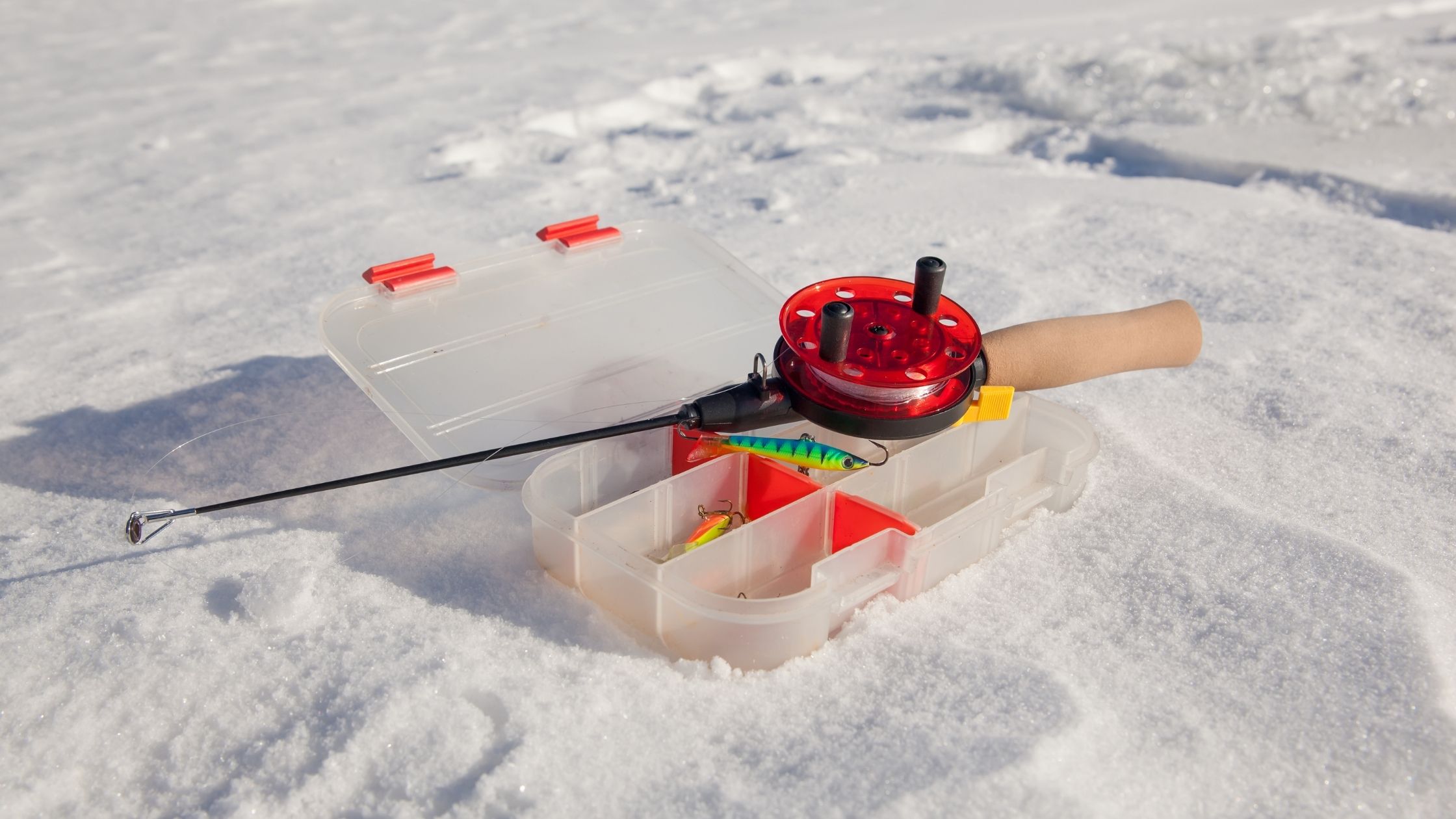Are you new to fishing? Or are you an experienced angler?
Regardless of your fishing experience, choosing a new fishing rod can be overwhelming. From the material to length, power and action, and a lot more, there is a long list of things you need to consider when choosing a fishing rod.
With that in mind, I have compiled a list of the most important things you should know as you buy a fishing rod for yourself. Moreover, the post contains details of various types of fishing rods so you can choose the right one for yourself and enjoy a seamless fishing experience.
So let’s get started.
How to Choose a Fishing Rod?
As you get started with choosing a fishing rod, there are several considerations that you need to keep in mind. Let’s look at some of the key factors that will help you choose the right fishing rod for your fishing day.
The Length of the Rod
Perhaps the most important considerations when it comes to choosing a fishing rod is the length of the rod. You can find fishing rods with lengths varying between 4 and 14 feet. If you are confused about the rod’s most appropriate length, know that different lengths have varying pros and cons. While shorter rods give you more control, they have a limitation that restricts how far you can throw the line.
On the other hand, longer fishing rods are designed for longer casts. However, they are often hard to operate. So if you are a novice fisherman, it’s best to for shorter rods first before investing in longer rods.
Another factor that can affect your choice of length of the rod is how you are fishing? Are you surf fishing? Or are you fishing from a kayak? Your position is another important factor that will affect the length of your rod.
The Material of Fishing Rod
Fishing rods are constructed using a variety of materials, including fiberglass, composite, or graphite. Each type of material has its pros and cons, so let’s take a closer look at different types of fishing rod materials.
Fiberglass Fishing Rods

Fiberglass is one of the most popular fishing rod materials that has been around for quite some time. It is a fisherman’s favorite as it is sturdy, enduring, and affordable. However, fiberglass fishing rods are very flexible, which makes it harder to detect the lighter bites. Moreover, they are heavier, so fishing can be tedious using fiberglass fishing rods.
Graphite Fishing Rods

An alternative material used for the fishing rod is a graphite rod that is relatively lighter in weight and is less flexible than fiberglass rods. If you take a closer look at the graphite fishing rods, you will notice certain markers such as IM6, IM7, and IM8 markers. These are the varying degrees of stiffness of the material. The higher the number on the marker, the stiffer the material will be.
However, it does not mean that an IM8 rod would be stiffer than an IM6 rod. Instead, the markers show the material’s stiffness, and a manufacturer can use less material to create a rod of similar stiffness. For you, that would mean lesser material being used in the construct, so you end up with a lighter rod.
Composite Fishing Rods

A composite fishing rod is a mixture of graphite and fiberglass fishing rod, which means it gives you the benefits of both worlds. Composite fishing rods give you the flexibility you need without adding much weight or affecting the rod’s sensitivity. And that’s precisely why a composite fishing rod is the most preferred choice for many seasoned fishermen.
Rod Action
Another key consideration when choosing a fishing rod is the rod action. In simple terms, it shows where along with the blank, the rod bends. A slow action rod bends closer to the handle, which means show action rods are much more flexible and give you a lot more control.
On the other hand, fast action fishing rods are more rigid and only bend at the top third of the blank. As a result, they are more sensitive, allowing you to catch the smallest critters to very large fish.
In between the two extremes lie medium action rods, which are versatile and bring you the best of both slow and fast action rods.
Rod Power
Closely linked to the action is the power of a fishing rod which is the force required to bend the fishing rod. Ranging from ultra-light to ultra-heavy, varying power is required to catch different species of the sea. For example, you will need ultra-light fishing rods for smaller species but for heavier species from the deep sea; it’s best to use ultra-heavy fishing rods.
Choosing the Right Type of Fishing Rod
Now that you are aware of most of the factors that will help you choose the right fishing rod, you know the key considerations that are important for choosing a fishing rod. With this information in mind, it is time to know about different types of fishing rods to make a more confident choice for your day by the waters.
Types of Fishing Rods
Here are eight types of fishing rods that you should know about so you can make the right choice.
Fly Fishing Rods

If you enjoy fly fishing, this is the type of rod you need. Fly fishing rods are designed for use with a fly reel and are available in various shapes and sizes. Fly fishing rods are flexible and can fly back and forward as you fix the bait and line.
Fly fishing rods are usually best for catching smaller fish species; however, you can also use this type of fishing rod to catch larger fish as long as you have a bigger fly fishing rod.
Here are some features that distinguish fly rods from other types of rods you will find in the market.
- The butt piece of a fly rod is missing as it allows you to freely cast the line while ensuring that the line doesn’t get entangled throughout the casting process.
- Moreover, fly rods need a heavy fly line which ensures durability, strength, and flexibility in the line, so you don’t have to worry about cracked lines.
See One of my recommendations on Outdoor Adores
Casting Rods

A casting fishing rod is different from a fly fishing rod designed for fishing in running streams or open waters. Using this rod, you can position the bait on the hook precisely so that luring the fish is not a tedious task. You can find different types of casting rods, including
- Baitcasting rod – a casting rod with multiple small eyes optimized to cast the line.
- Spin casting rod – have multiple small eyes, with one big eye close to the reel.
See One of my recommendations on Outdoor Adores
Spinning Rods

Spinning rods may appear quite similar to casting rods; however, there are a few differences. Spinning rods are shorter in length than casting rods. Moreover, they are also lighter in weight. Furthermore, spinning rods have a large eye that minimizes the friction of the fishing line, which prevents it from getting heated and snapping.
You can find spinning rods with varying lengths ranging between four to nine feet. Moreover, depending upon the length of the rod, the number of eyes also varies. Usually, the number of eyes can range between five and nine.
With spinning rods, the reel is suspended under the rod, which reduces pressure on the wrist as you cast the line, making fishing a pleasant experience.
See one of my recommendations on Outdoor Adores
Sea Fishing Rods

As the name suggests, sea fishing rods are designed for individuals who enjoy finishing in the sea. Moreover, sea fishing rods are designed to be used from a ship or a boat. Like all other types of fishing rods, you can find varying lengths of the rods. For use from a boat, you will need a shorter one; however, you will need a longer fishing rod if you are fishing from a ship.
Since sea fishing rods are designed to be used to catch large fish in the sea, they are heavy-duty fishing rods with thicker lines and larger eyes.
Telescopic Rods

Another type of fishing rod that experienced fishermen prefer is a telescopic rod. The compact, easy-to-carry fishing rods are telescopic, which means that you can extend the rod. When the rod is closed, the length is around one to two feet; however, as you extend the rod, it can achieve a length of around 20 feet.
With a telescopic rod, know that you will have to assemble. However, the process is quite simple and quick. Moreover, a telescopic rod is without eyes as the rod is already long and flexible, making it a perfect choice for individuals who like to go surf fishing. But let’s not forget that this rod is not for everyone. You can only use this rod if you have experience in line casting.
See my recommendation in Outdoor Adores
Trolling Rods

For individuals looking for an enjoyable and relaxing fishing experience, trolling rods are the best choice. With this type of fishing rod, you can play cat and mouse games with the fish as you try to attract it to the bait. You need to know that trolling rods are long. However, they are not thin as thin rods can break and snap as you catch the fish. With these think and durable trolling rods, you can surely win the battle with your baited fish.
While trolling rods are not a popular choice anymore, if you are an ardent fisherman, you must have this type of rod in your collection of fishing rods.
See my recommendation in Outdoor Adores
Surf Rods

To make the most of your surf fishing experience, you need a surf fishing rod. With a long line and a thick and sturdy construct, this type of rod comes with a heavy sinker (Types of Fishing Sinkers), so your line doesn’t float away with the moving water. Moreover, it has a long keg which means you can cast the line as you hold the rod in both hands. Again, since it is a long fishing rod, it is best to have some experience handling long and flexible fishing rods before you get a surf rod for yourself.
See my recommendation in Outdoor adores
Ice Fishing Rod

For a relaxing ice fishing experience, it is best to invest in an ice fishing rod. With ice fishing, you need to drill a small hole in the ice, so you need a fishing rod that’s smaller in length. Due to this reason, ice fishing rods are small (around 25 to 37 inches long). Moreover, due to the shorter length, it has fewer eyes.
A traditional ice fishing rod comes without a reel which means you will be required to put in extra effort to enjoy a long ice fishing experience.
See my recommendation on Outdoor Adores
Final Words on Types of Fishing Rods
Finding the right fishing rod is not always easy. In fact, it is a challenging task that can be overwhelming for most individuals, especially if you are new to fishing. Even for seasoned angular, the choice can be tough, given the variety of fishing rods available on the market. But with this post, I am sure you have enough information about different types of fishing rods that will help you choose the right fishing rod for yourself. Moreover, with the buying guide that I shared earlier, you know what to look for as you head out to invest in a fishing rod.
So what are you waiting for? To make the most of your fishing experience, grab one for yourself now and enjoy the latest addition to your fishing arsenal.
Shop Now


